标签:
【刘蔚然 原创作品转载请注明出处 《Linux内核分析》MOOC课程http://mooc.study.163.com/course/USTC-1000029000 】
因而,本讲将介绍第二个重点:函数调用堆栈
堆栈是C语言程序运行时必须的一个记录调用路径和参数的空间,包括:
(也就是说CPU内已经集成好了一些功能)
(上一讲中已经有所涉及,也就是ebp,esp这两个寄存器;还有eip这个寄存器)
【疑惑:关于pushl和popl两条命令对esp的影响?】
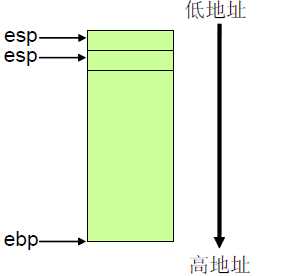
【发生中断的时候,cs:eip会怎么变化呢?(之前的顺序、跳转以及调用都是一条流畅的指令流,并没有发生中断)】见最后一讲的笔记
【函数调用的堆栈框架?】
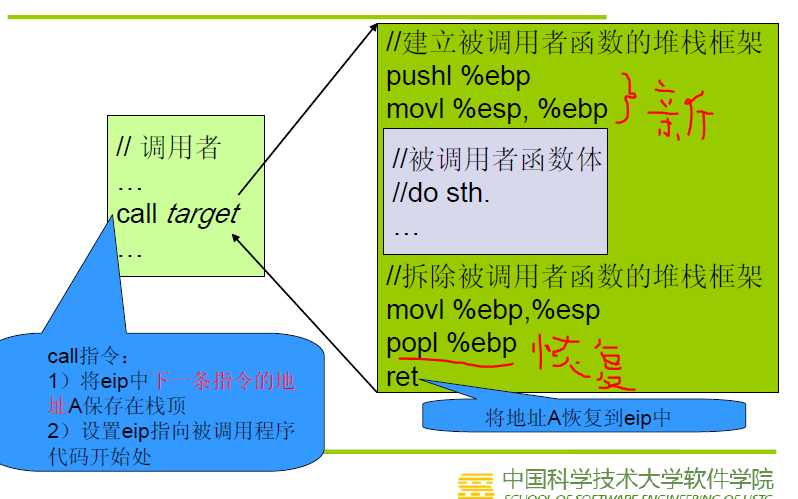
以如下的代码反汇编程序为例:
#include <stdio.h>
void p1(char c)
{
printf("%c",c);
}
int p2(int x,int y)
{
return x+y;
}
int main(void)
{
char c =‘a‘;
int x,y;
x =1;
y =2;
p1(c);
z = p2(x,y);
printf("%d = %d+%d",z,x,y);
}
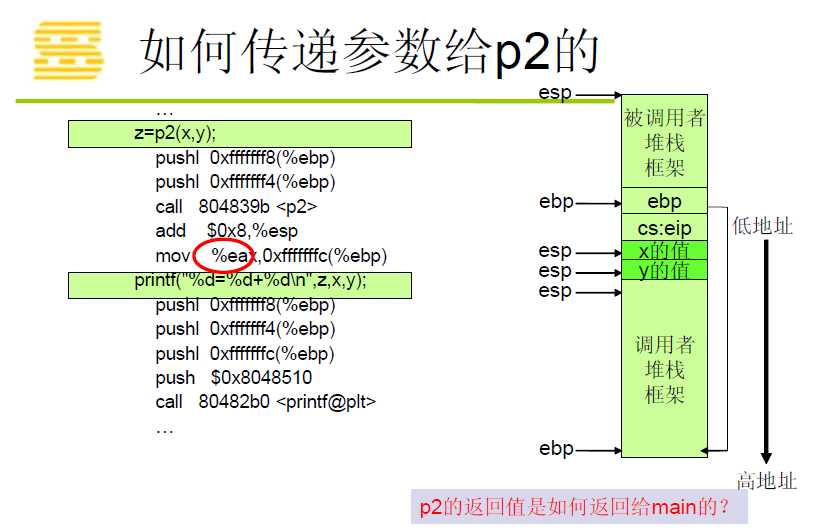
关于0xfffffff4、0xfffffff8的意思? 我在网上查了一下,其实这里面的0x虽然是16进制的意思,不过f并不是表示负数,而是一种内存表示方法(也有说0xfffffff4这个地址有一些其他的限制)
前两条语句什么意思?
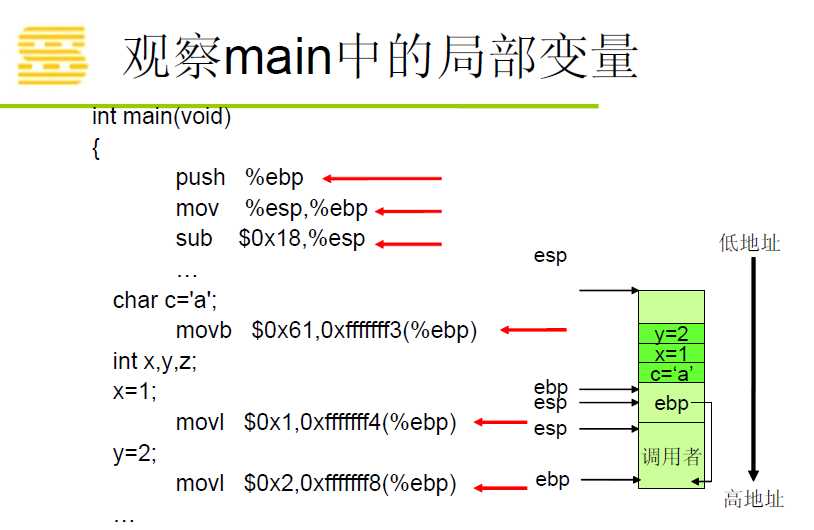
1.sub $0x18,%esp 的作用?

(6,7为编译及反汇编)
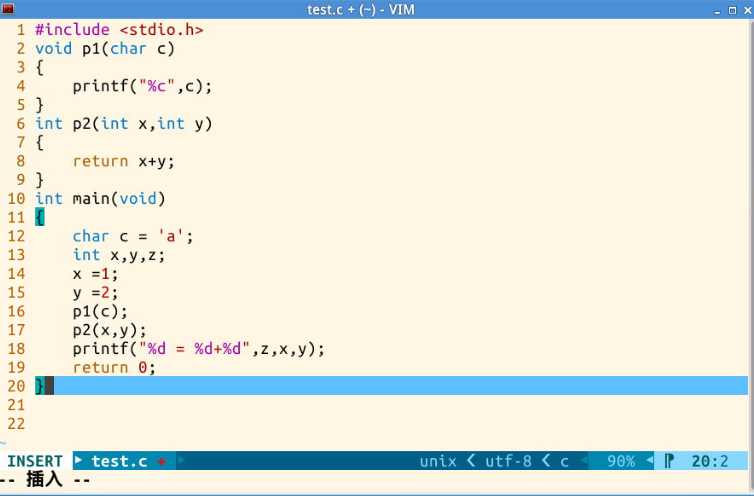

(8——11为代码)
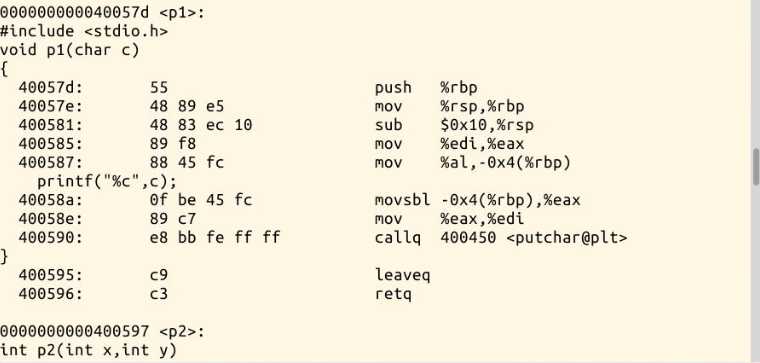
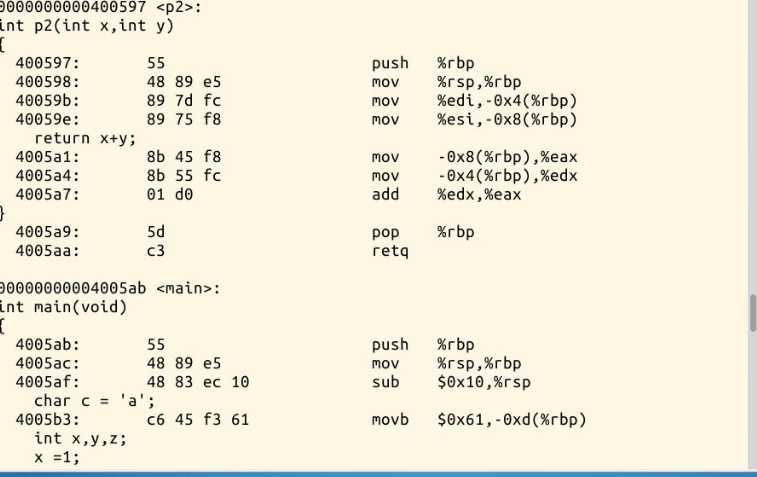
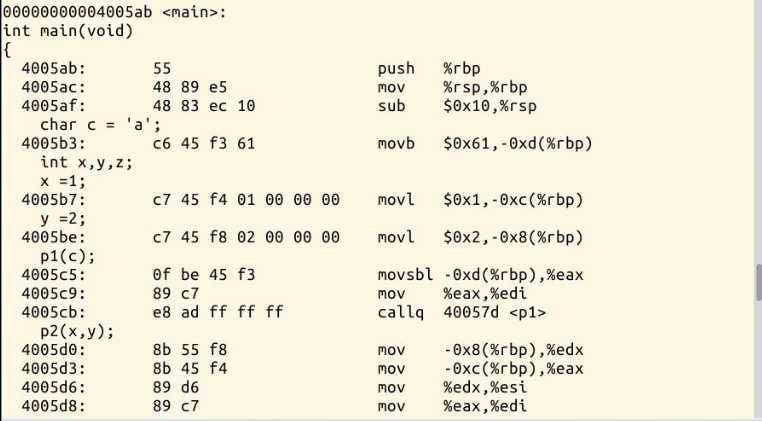
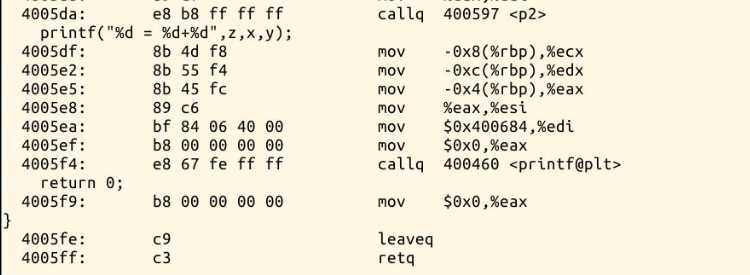
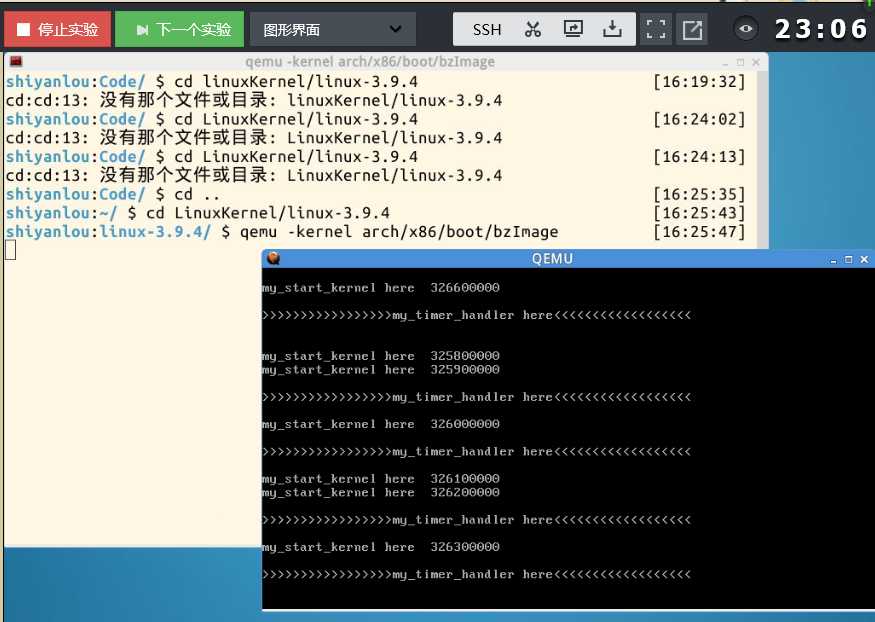
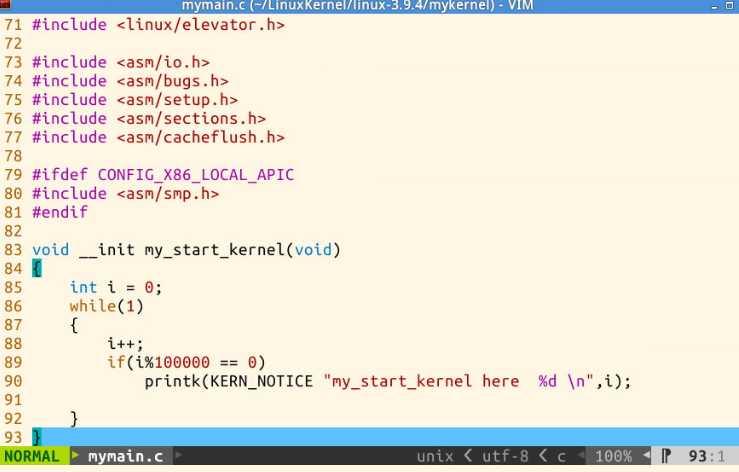
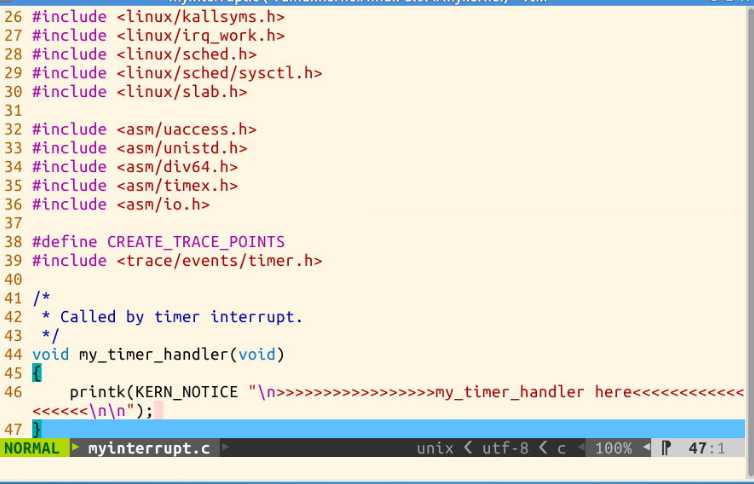
格式:(图15)
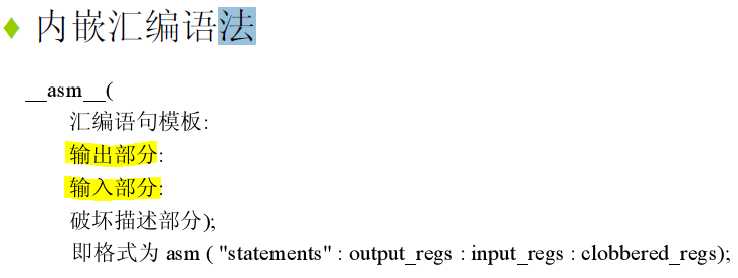
例子:


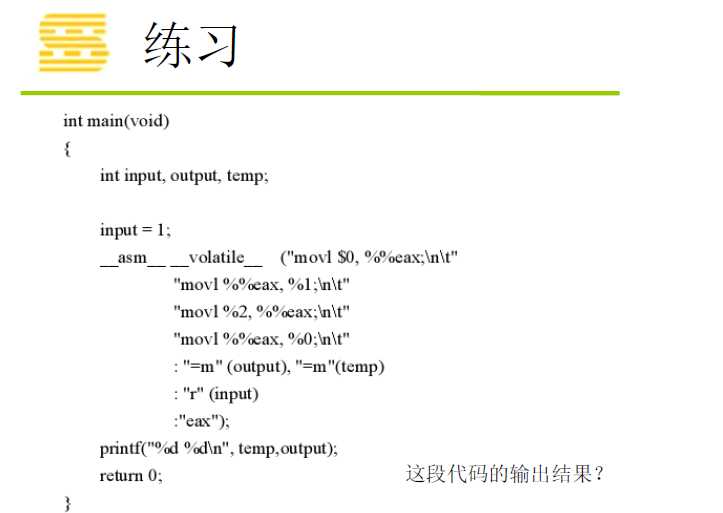
1.mypcb.h//头文件,在其他的.c文件中引用;主要是数据结构的定义
1 /*
2 * linux/mykernel/mypcb.h
3 *
4 * Kernel internal PCB types
5 *
6 * Copyright (C) 2013 Mengning
7 *
8 */
9
10 #define MAX_TASK_NUM 4
11 #define KERNEL_STACK_SIZE 1024*8
12
13 /* CPU-specific state of this task */
14 struct Thread {
15 unsigned long ip; //即eip和esp
16 unsigned long sp;
17 };
18
19 typedef struct PCB{ //定义进程相关的数据结构
20 int pid;
21 volatile long state; /* -1 unrunnable, 0 runnable, >0 stopped */
22 char stack[KERNEL_STACK_SIZE]; //内核堆栈
23 /* CPU-specific state of this task */
24 struct Thread thread;
25 unsigned long task_entry; //进程入口
26 struct PCB *next; //进程链表
27 }tPCB;
28
29 void my_schedule(void); //调度器
2.mymain.c 内核初始化和0号进程启动
1 /*
2 * linux/mykernel/mymain.c
3 *
4 * Kernel internal my_start_kernel
5 *
6 * Copyright (C) 2013 Mengning
7 *
8 */
9 #include <linux/types.h>
10 #include <linux/string.h>
11 #include <linux/ctype.h>
12 #include <linux/tty.h>
13 #include <linux/vmalloc.h>
14
15
16 #include "mypcb.h"
17
18 tPCB task[MAX_TASK_NUM]; //声明一个task数组,tPCB结构体类型在mypcb.h中有定义
19 tPCB * my_current_task = NULL;
20 volatile int my_need_sched = 0;
21
22 void my_process(void);
23
24
25 void __init my_start_kernel(void)
26 {
27 int pid = 0; //这样的话修改进程序号就很方便
28 int i;
29 /* Initialize process 0*/ //以下是0号进程数据结构的初始化
30 task[pid].pid = pid;
31 task[pid].state = 0;/* -1 不可运行, 0 可运行, >0 停止*/
32 task[pid].task_entry = task[pid].thread.ip = (unsigned long)my_process; //见第58行开始的my_process函数;起点是my_process
33 task[pid].thread.sp = (unsigned long)&task[pid].stack[KERNEL_STACK_SIZE-1]; //堆栈的栈顶位置,这个在mypcb.h中也有定义
34 task[pid].next = &task[pid]; //下一个进程还是指向自己(这时候没有其他进程)
35 /*fork more process */
36 for(i=1;i<MAX_TASK_NUM;i++)
37 {
38 memcpy(&task[i],&task[0],sizeof(tPCB)); //copy一下0号进程的状态,然后需要修改的地方再修改(好机智的做法)
39 task[i].pid = i;
40 task[i].state = -1; //不能让它们现在就开始运行
41 task[i].thread.sp = (unsigned long)&task[i].stack[KERNEL_STACK_SIZE-1];
42 task[i].next = task[i-1].next; //42,43两句是很常见的链表加入新项的方法
43 task[i-1].next = &task[i];
44 }
45 /* start process 0 by task[0] */ //为什么这里会是两句pushl和两句popl(ret相当于popl eip)?我的理解是:这样使得新的堆栈中的ebp和eip都与task[i]相匹配(esp的位置已经由第49句决定)
46 pid = 0; //作用同第27行
47 my_current_task = &task[pid];
48 asm volatile(
49 "movl %1,%%esp\n\t" /* set task[pid].thread.sp to esp */ //确定esp的位置
50 "pushl %1\n\t" /* push ebp */ //当前的栈是空的,ebp就等于esp
51 "pushl %0\n\t" /* push task[pid].thread.ip */ //IP压栈
52 "ret\n\t" /* pop task[pid].thread.ip to eip */ //弹出来eip,这之后0号进程正式启动
53 "popl %%ebp\n\t" //弹出来ebp,内核初始化工作完成
54 :
55 : "c" (task[pid].thread.ip),"d" (task[pid].thread.sp) /* input c or d mean %ecx/%edx*/
56 );
57 }
58 void my_process(void) //所有的进程都以这个作为起点
59 {
60 int i = 0;
61 while(1)
62 {
63 i++;
64 if(i%10000000 == 0)
65 {
66 printk(KERN_NOTICE "this is process %d -\n",my_current_task->pid);
67 if(my_need_sched == 1) //执行10 000 000次才判断一次是否需要调度
68 {
69 my_need_sched = 0; //在第20行初始化为0
70 my_schedule();
71 }
72 printk(KERN_NOTICE "this is process %d +\n",my_current_task->pid);
73 }
74 }
75 }
3myinterrupt.c 调度机制
1 /*
2 * linux/mykernel/myinterrupt.c
3 *
4 * Kernel internal my_timer_handler
5 *
6 * Copyright (C) 2013 Mengning
7 *
8 */
9 #include <linux/types.h>
10 #include <linux/string.h>
11 #include <linux/ctype.h>
12 #include <linux/tty.h>
13 #include <linux/vmalloc.h>
14
15 #include "mypcb.h"
16
17 extern tPCB task[MAX_TASK_NUM];
18 extern tPCB * my_current_task;
19 extern volatile int my_need_sched;
20 volatile int time_count = 0;
21
22 /*
23 * Called by timer interrupt.
24 * it runs in the name of current running process,
25 * so it use kernel stack of current running process
26 */
27 void my_timer_handler(void)
28 {
29 #if 1
30 if(time_count%1000 == 0 && my_need_sched != 1) //设置时间片的大小,时间片用完时设置一下调度标志。只要满足上述两个条件,就将my_need_sched设为1,这样mymain.c循环到这个进程的时候就可以对这个进程进行调度
31 {
32 printk(KERN_NOTICE ">>>my_timer_handler here<<<\n");
33 my_need_sched = 1;
34 }
35 time_count ++ ;
36 #endif
37 return;
38 }
39
40 void my_schedule(void)
41 {
42 tPCB * next;
43 tPCB * prev;
44
45 if(my_current_task == NULL
46 || my_current_task->next == NULL)
47 {
48 return;
49 }
50 printk(KERN_NOTICE ">>>my_schedule<<<\n");
51 /* schedule */
52 next = my_current_task->next;
53 prev = my_current_task;
54 if(next->state == 0)/* -1 unrunnable, 0 runnable, >0 stopped */ //在两个正在执行的进程之间做上下文切换
55 {
56 /* switch to next process */
57 asm volatile(
58 "pushl %%ebp\n\t" /* save ebp */
59 "movl %%esp,%0\n\t" /* save esp */
60 "movl %2,%%esp\n\t" /* restore esp */
61 "movl $1f,%1\n\t" /* save eip */ //$1f就是指标号1:的代码在内存中存储的地址
62 "pushl %3\n\t"
63 "ret\n\t" /* restore eip */ //这两句使得下一个进程的ip作为eip,这样下一个进程就会接下来执行
64 "1:\t" /* next process start here */
65 "popl %%ebp\n\t"
66 : "=m" (prev->thread.sp),"=m" (prev->thread.ip)
67 : "m" (next->thread.sp),"m" (next->thread.ip)
68 );
69 my_current_task = next;
70 printk(KERN_NOTICE ">>>switch %d to %d<<<\n",prev->pid,next->pid
71 }
72 else //进程是一个新的进程(从来没有执行过)
73 {
74 next->state = 0;
75 my_current_task = next;
76 printk(KERN_NOTICE ">>>switch %d to %d<<<\n",prev->pid,next->pid);
77 /* switch to new process */
78 asm volatile(
79 "pushl %%ebp\n\t" /* save ebp */
80 "movl %%esp,%0\n\t" /* save esp */
81 "movl %2,%%esp\n\t" /* restore esp */
82 "movl %2,%%ebp\n\t" /* restore ebp */ //新进程的esp和ebp都是相同位置
83 "movl $1f,%1\n\t" /* save eip */
84 "pushl %3\n\t" //保存当前进程的入口
85 "ret\n\t" /* restore eip */
86 : "=m" (prev->thread.sp),"=m" (prev->thread.ip)
87 : "m" (next->thread.sp),"m" (next->thread.ip)
88 );
89 }
90 return;
91 }
这样,就完成了一个简单地操作系统内核程序并能够在虚拟机中启动。实现的效果就是0,1,2,3号进程依次循环切换。
如何理解“操作系统是如何工作的?”
WEEK TWO(2.29——3.6)操作系统是如何工作的?
标签:
原文地址:http://www.cnblogs.com/lwr-/p/5235693.html